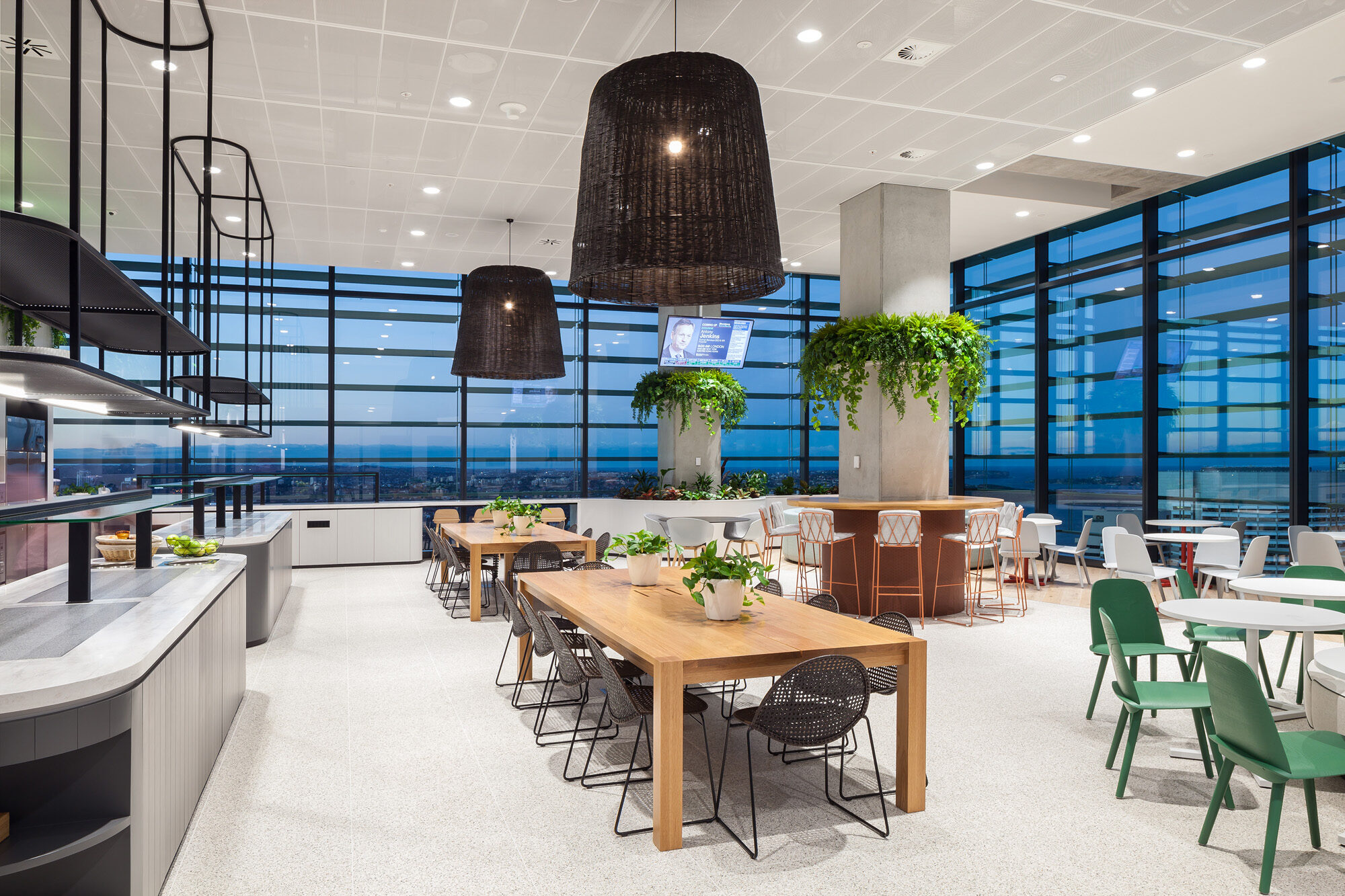Strategic Office Layout Design: Transforming Financial Trading Environments
The Susquehanna International Group project exemplifies how expert project management oversight and strategic project delivery can transform high-performance trading floor environments. This comprehensive office transformation showcases sophisticated project coordination methodologies and innovative office layout solutions designed specifically for the demanding requirements of quantitative trading operations in the United States financial sector.
Managing complex office transformations for financial institutions requires specialized expertise in both technical infrastructure and regulatory compliance. The project involved comprehensive space planning that optimized trading floor functionality while incorporating advanced technology infrastructure, acoustic solutions for noise management, and ergonomic workstation design that supports intensive computer-based work environments. Every aspect of the design prioritized operational efficiency and employee wellbeing.
The success of this project demonstrates the critical importance of understanding the unique operational requirements of quantitative trading firms, where milliseconds matter and workspace design directly impacts business performance. From initial concept development through final occupancy, the project required seamless coordination between multiple specialized contractors, technology vendors, and regulatory compliance consultants to ensure optimal results.
Advanced project planning services were essential to coordinate the complex timeline requirements, including after-hours construction to minimize disruption to trading operations, specialized equipment installation during market closures, and phased delivery that allowed continuous business operations throughout the transformation process. The project showcased how strategic construction management can deliver exceptional results within the stringent requirements of financial services environments.
Project Management for High-Performance Trading Floors
The Susquehanna project required sophisticated project scheduling and specialized project oversight to coordinate multiple technical systems including advanced networking infrastructure, redundant power supplies, and specialized HVAC systems designed for high-density computing environments. Construction management protocols addressed the unique challenges of working within active trading environments, including strict security requirements, limited access windows, and the need to maintain operational continuity.
The project oversight team implemented comprehensive quality control measures, coordinating with specialized contractors for trading floor technology, acoustic engineering consultants, and security system integrators. Advanced project management software enabled real-time tracking of critical path activities, ensuring that technology installations, testing phases, and regulatory inspections proceeded according to schedule without compromising trading operations.
Risk management was paramount given the high-stakes nature of trading operations, with detailed contingency planning for potential disruptions, backup power systems during construction, and comprehensive testing protocols to ensure all systems functioned perfectly before go-live. The construction management approach prioritized both technical excellence and operational reliability throughout the entire project lifecycle.
Strategic Project Planning and Coordination Excellence
The project planning services encompassed comprehensive stakeholder coordination, from IT infrastructure specialists and compliance officers to ergonomics consultants and acoustic engineers. Strategic project coordination involved managing complex interdependencies between electrical systems, network infrastructure, security protocols, and workspace design elements that collectively create optimal trading environments.
Project oversight included detailed scheduling coordination with market hours, ensuring that critical installations occurred during non-trading periods while maintaining accelerated timelines. The project coordination team established clear communication protocols between all stakeholders, implemented rigorous change management processes, and maintained detailed documentation to ensure compliance with financial services regulations and internal security requirements.
Advanced project management methodologies enabled the team to deliver complex technical installations while coordinating with multiple vendors, managing regulatory approval processes, and ensuring seamless integration between new installations and existing building systems. The success demonstrates how expert project coordination can optimize outcomes even in highly specialized, mission-critical environments.
Employee Experience Design and Workspace Optimisation
The office design philosophy centered on creating high-performance work environments that support the intense concentration and rapid decision-making required in quantitative trading. Employee experience design considerations included ergonomic workstation configurations, advanced lighting systems that reduce eye strain during extended screen time, and acoustic solutions that enable clear communication while minimizing distracting noise from trading floor activities.
Workspace optimization strategies incorporated flexible meeting spaces for strategy sessions, quiet zones for research and analysis, and collaborative areas that foster innovation and knowledge sharing. The design integrated cutting-edge technology seamlessly into the workspace aesthetic, creating environments that are both functionally superior and visually appealing to support employee satisfaction and retention in competitive financial markets.
The project’s success in balancing high-performance functionality with employee wellbeing demonstrates how thoughtful interior design can enhance both operational efficiency and workplace culture. Advanced facility management integration ensures the workspace continues to perform optimally while adapting to evolving business requirements and technological advances in the financial services sector.







